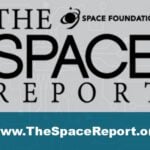Global Space
2016: A Year in Review
Written by: developer

It’s been an exciting year for the global space industry. Let’s take a look at some amazing 2016 space moments!
March 1: The Launch of ExoMars. A joint ESA-Roscosmos mission to Mars, ExoMars left the Earth at 9:31 UTC on March 1, 2016, from Baikonur Kazakhstan. The Trace Gas Orbiter (TGO) and Schiaparelli took a seven-month journey to the red planet. Unfortunately, the landing did not go as planned for Schiaparelli, but the mission is far from over. TGO continues to circle the planet, collecting data on rare Martian atmospheric gases, including methane. The second ExoMars mission is scheduled to launch in May 2018.
March 2: Scott Kelly Returns Home. A day after ExoMars headed to the red planet, NASA astronaut Scott Kelly and Russian cosmonaut Mikhail Kornienko returned to Earth after a year in space. One goal of the mission was to get a better understanding of the effects of long-term space travel on the human body.
April 8: SpaceX First Drone Ship First Stage Landing. After a few prior attempts, each with something learned and a dry land landing in December 2015, SpaceX landed the first stage of the Falcon 9 rocket on drone Ship “P.S. I Still Love You.” An important step in rocket reusability, SpaceX has now nailed the landing a handful of times and will likely fly the first reused rocket during the first quarter of 2017.
July 4: Juno arrives at Jupiter. Launched in 2011, Juno finally arrived at gas giant Jupiter on the fourth of July. Juno’s mission is to “improve our understanding of the solar system’s beginning by revealing the origin and evolution off Jupiter.” This includes determining how much water is in Jupiter’s atmosphere, mapping the magnetic and gravity fields, as well as exploring and studying the magnetosphere near Jupiter’s poles.
Sept. 15: Chinese launch Tiangong-2. Late in the evening of Sept. 15 in China, the uncrewed Tiangong-2 spacecraft headed into space from the Jiuquan Satellite Launch Center in the Gobi Desert. Tiangong-2 is a space station laboratory that China plans to have up and running in the early 2020s. Following the launch of the station in October, two taikonauts (Chinese astronauts) headed to the space station aboard the Shenzhou-11 and lived for 30 days.
Oct. 16: Orbital ATK Return to Flight. After a failed launch attempt in 2014, Orbital ATK made a strong return to spaceflight on the evening of Oct. 16. The night launch of the Antares rocket from Wallops Island, Va., was able to be viewed by a large portion of the east coast, and successfully delivered a load of about 5,100 lbs. of supplies and science experiments to the International Space Station.
Nov. 19: Launch of GOES-R. The National Oceanic and Atmospheric Administration’s (NOAA) next generation weather satelite, Geostationary Operational Environmental Satellite-R Series (GOES-R) launched from Cape Canaveral Air Force Station at 6:42 p.m atop a United Launch Alliance (ULA) Atlas V rocket. GOES-R mission is to “significantly improve the detection and observation of environmental phenomena that directly affect public safety, protection of property and our nation’s economic health and prosperity.” GOES-R will help moniter severe weather, including lightning, and help weather forcasters predict storms with greater lead time, ultimately, saving more lives on Earth.
This article is part of Space Watch: December 2016 (Volume: 15, Issue: 12).


